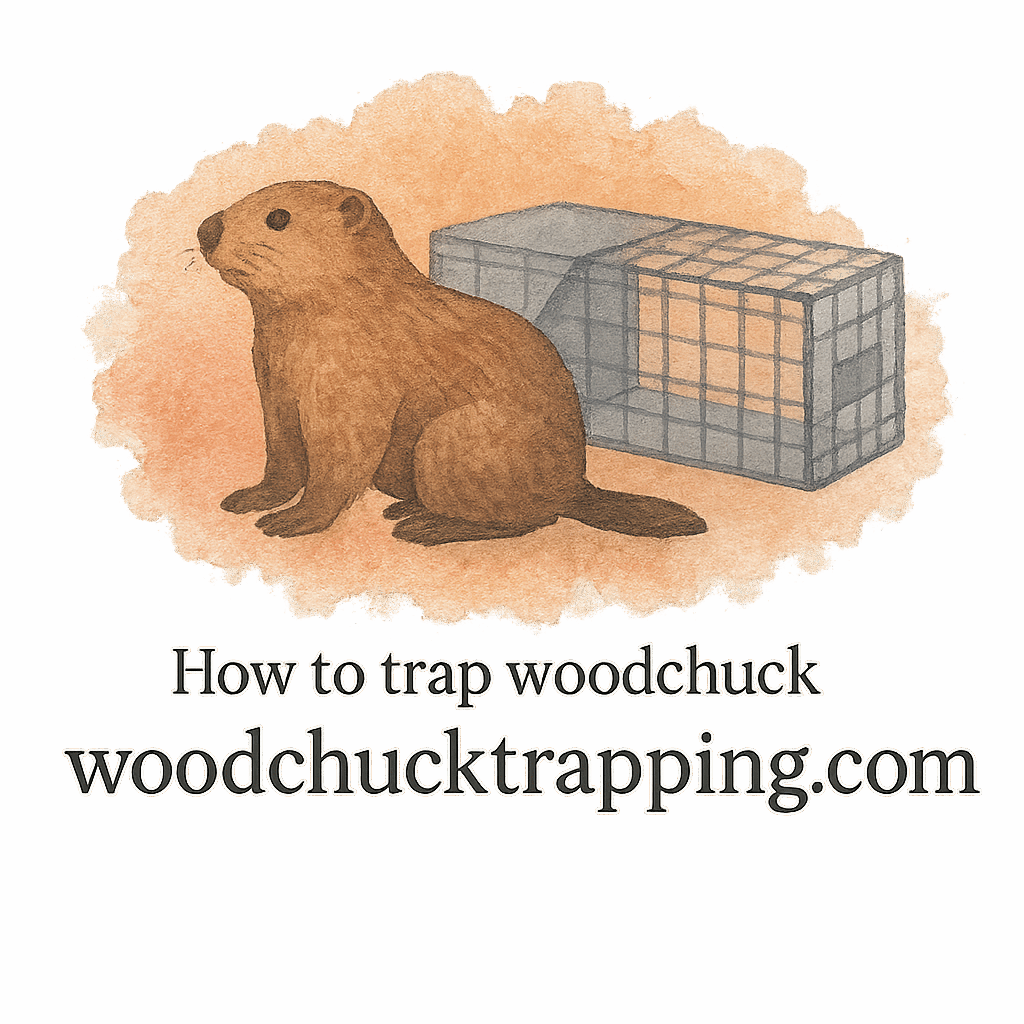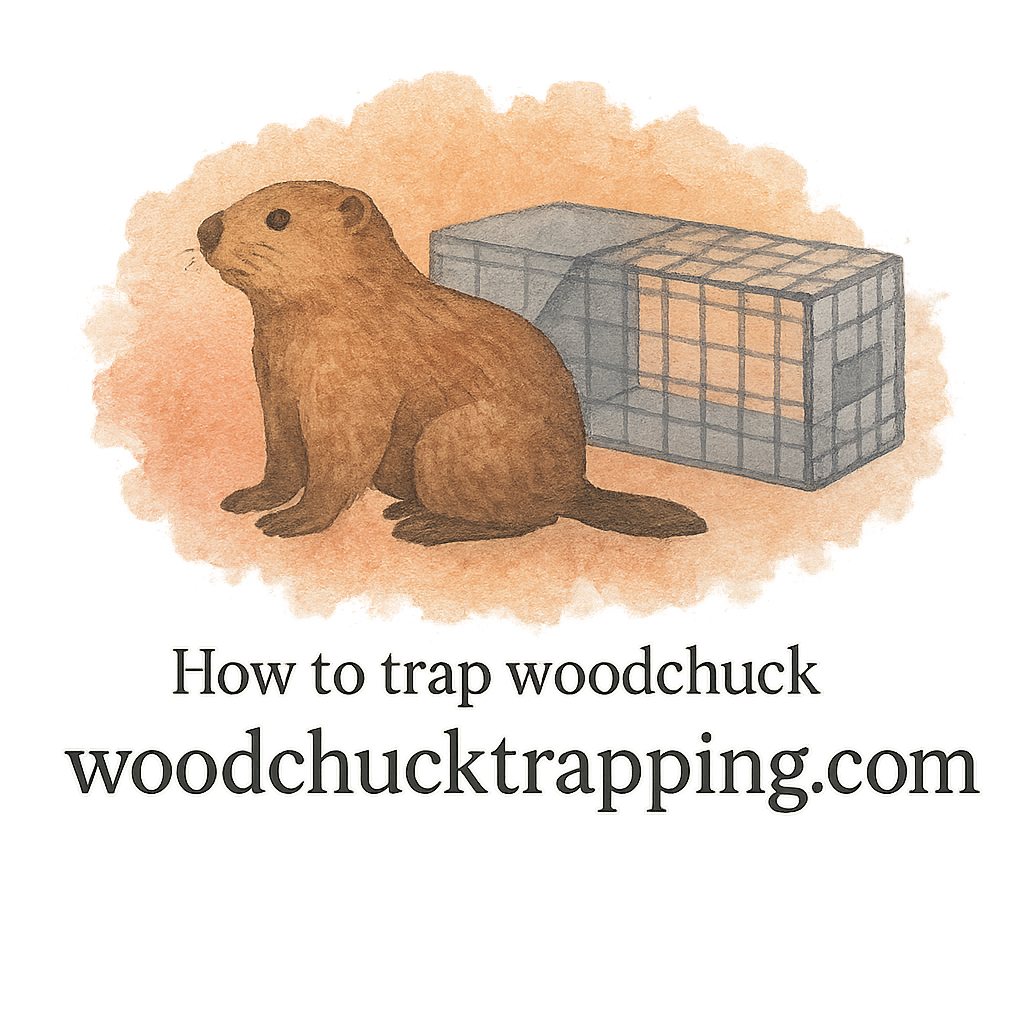Introduction
So, you’ve got a woodchuck problem—again. These fuzzy but destructive diggers can tear up your yard like it’s their full-time job. And if you’re not baiting them correctly, you’re just wasting time (and possibly making things worse). The truth? Most people make at least one of the eight major mistakes when baiting woodchucks.
Let’s dive into what you could be doing wrong and how to fix it like a pro. Whether you’re new to trapping or just tired of trial-and-error, this guide will give you the edge.
Why Proper Baiting Matters in Woodchuck Trapping
If your goal is to outsmart a woodchuck, baiting is where the chess match begins. The right bait, in the right trap, placed in the right spot—combined with the right trapping techniques—is key to effective, humane capture.
Plus, let’s face it, nobody wants to waste time resetting a trap that didn’t even attract the target.
Mistake #1: Using the Wrong Bait
Popular Bait Choices That Actually Work
You can’t just toss an apple in the trap and hope for the best (though apples do work—just not alone). Effective baits include:
- Fresh cantaloupe (especially the rind)
- Romaine lettuce
- Carrots
- Sweet corn
The aroma, freshness, and moisture content matter. Want to maximize your results? Check out baiting and luring techniques tailored for woodchucks.
Baits to Avoid When Trapping Woodchucks
Stay away from:
- Meat-based baits (they attract the wrong animals)
- Processed human food
- Overripe or moldy produce
Also, woodchucks are vegetarians with a sensitive nose—they’ll walk away from anything that smells off.
Mistake #2: Ignoring Scent Control
Why Your Scent Can Ruin the Trap
This one’s huge. Woodchucks are incredibly scent-aware. If you set the trap with bare hands, they’ll know you’ve been there. That human scent lingers like a bad cologne.
How to Use Gloves and Scent-Free Tools
Always use trapping gloves and tools stored away from strong odors like gasoline or soap. Consider scent-masking lures or even natural camouflage sprays that don’t spook your target.
For pro tips, explore our tag on scent bait and trap scent strategies.
Mistake #3: Poor Trap Placement
Understanding Woodchuck Behavior and Burrows
Woodchucks love predictability. They exit the same holes, follow similar routes, and nibble on nearby plants. Recognizing signs of activity like burrow holes, gnawed veggies, and pathways is essential.
Best Trap Locations in Your Yard
Place traps near active burrow entrances or well-used trails. Avoid overly exposed or heavily trafficked human areas. If you’re working in a small yard, positioning is even more crucial.

Mistake #4: Overlooking the Importance of Lures
Using Bait Alone vs. Bait + Lure
Bait attracts. Lures excite curiosity. When you combine both, you’re playing 4D chess with your woodchuck. Use natural lures to amplify the bait’s scent trail.
Lures can mimic plant pheromones or be made from real vegetation oils that keep the woodchuck sniffing long enough to wander into your trap.
Mistake #5: Not Using the Right Equipment
Compact Traps vs. Traditional Traps
Not all traps are created equal. For tight spots, compact traps do wonders, especially if space is limited or you’re dealing with multiple burrows.
Why Trap Gear Quality Matters
Cheap traps may not spring fast enough, or worse—may injure the animal. Invest in reliable trapping gear reviewed by pros. Our full list of equipment reviews can help you avoid money-wasting mistakes.
Mistake #6: Being Inconsistent with Monitoring
Timing and Frequency Matter
If you leave your trap out too long without checking it, you risk:
- Animal stress or injury
- Escapes
- Attracting non-target species
Check your traps every few hours during active periods—especially dawn and dusk.
Mistake #7: Disregarding Local Trapping Laws
Safety, Laws, and Ethical Considerations
Ignoring regulations can get you fined—or worse. Every area has its own guidelines on trapping, relocation, and euthanasia. Brush up on your local laws and safety before setting that trap.
For more resources, visit our tags on safety and humane methods.
Mistake #8: Failing to Prevent Future Infestations
Prevention Tips After Trapping
Trapping is only half the battle. If you don’t address what attracted the woodchuck in the first place, another one will take its place.
Use fences, remove food sources, fill in old burrows, and install underground barriers. More on this in our prevention and damage control section.
Conclusion
When it comes to baiting woodchucks, the devil is in the details. One wrong move—using the wrong bait, forgetting gloves, placing traps in a bad spot—and your trap turns into an expensive lawn ornament.
Avoid these eight common mistakes, and you’ll be ahead of 90% of homeowners dealing with these burrowing bandits. With the right knowledge, tools, and techniques, you’ll have a woodchuck-free yard in no time.
Need more help? Check out our guides on trapping essentials and how to trap like a pro.
FAQs
1. What’s the best bait for woodchucks?
Fresh fruits like cantaloupe, apples, and leafy greens work great. Combine with a lure for best results.
2. How do I know if a trap has been tampered with?
Look for displaced bait, moved trap doors, or footprints nearby. Game cameras can help too.
3. Are woodchucks dangerous to pets?
Not usually aggressive, but a cornered woodchuck will defend itself. Keep pets away from active traps.
4. Can I trap a woodchuck humanely?
Absolutely. Use high-quality traps and check them frequently. Read more on our humane trapping tips.
5. Is it legal to trap and relocate woodchucks?
Depends on your area. Always consult your local laws before relocating wildlife.
6. How do I find a woodchuck’s burrow?
Look for 10-12 inch wide holes near shed foundations, gardens, or woodpiles, often surrounded by mounds of dirt.
7. What should I do after catching a woodchuck?
Follow local regulations. Whether relocating or calling animal control, always wear handling gloves and remain cautious.


